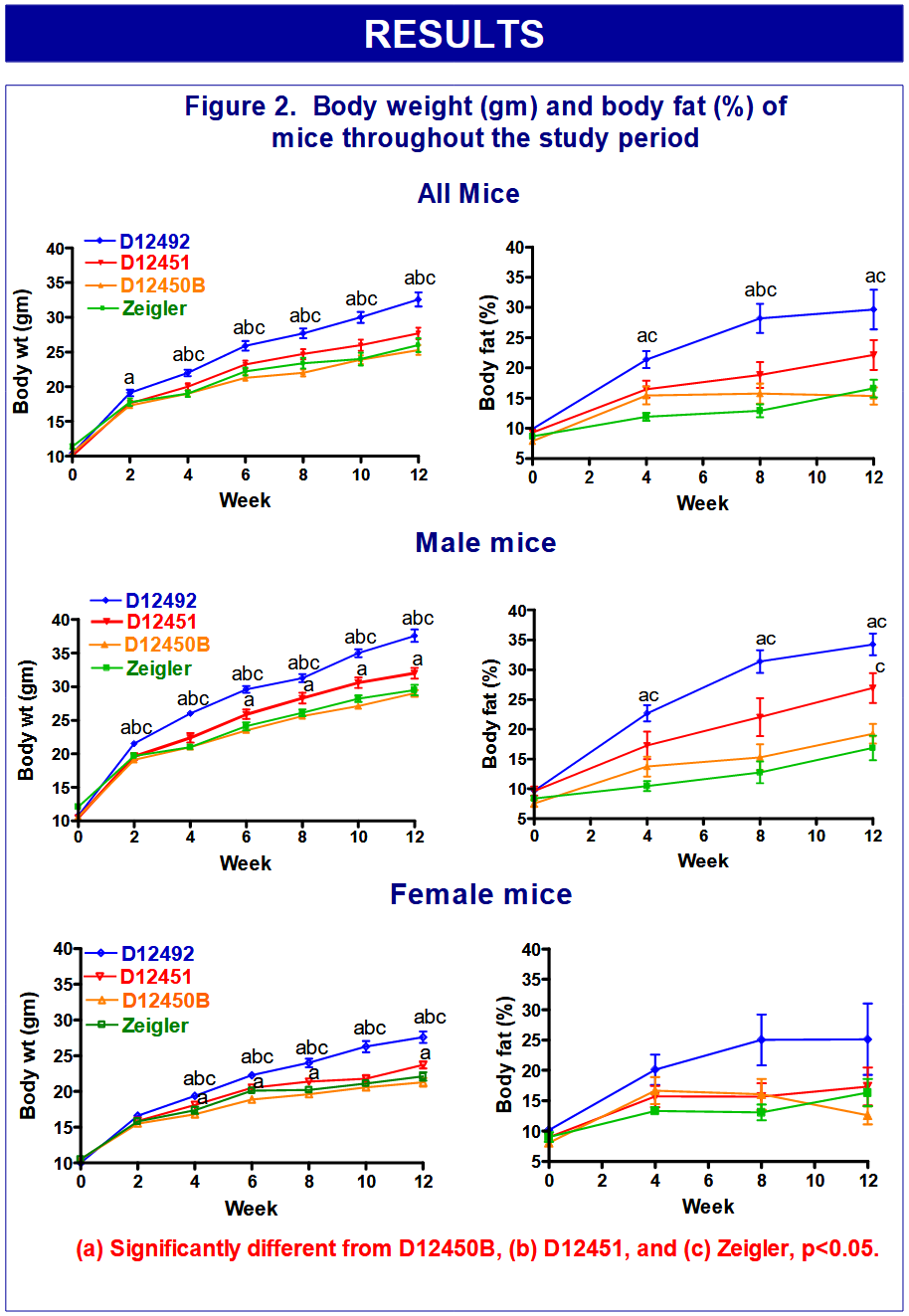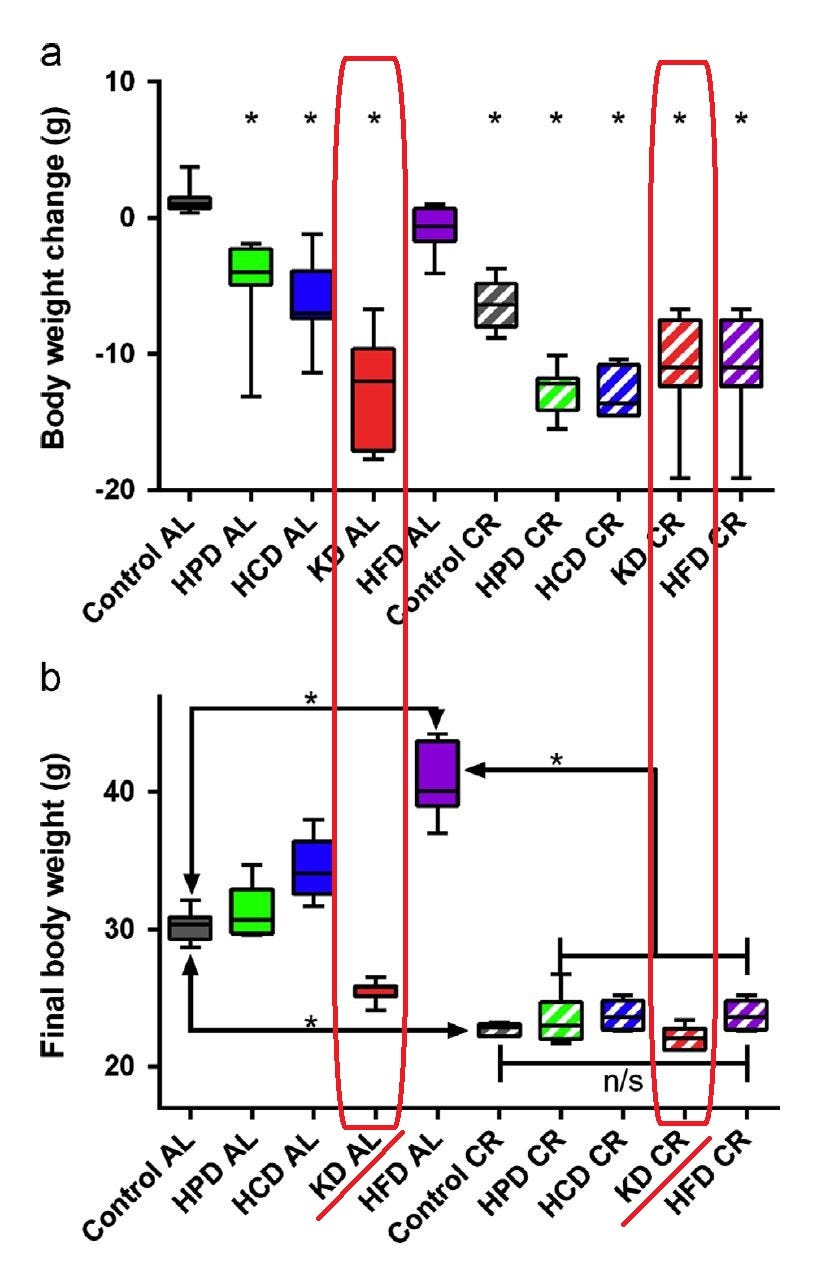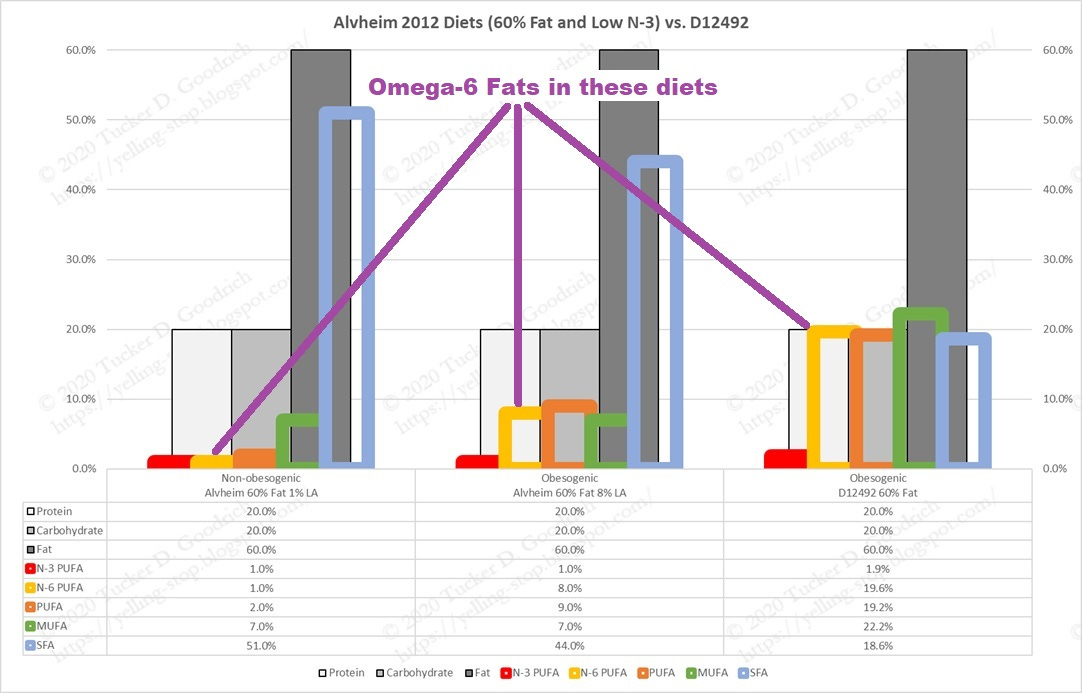Here’s the previous post, since it was from yesterday, I’m not going to summarize it.
Results are in!
Here are the results:

And here they are excluding the “Don’t know” category:
75% Got the Wrong Answer!
Wow. I’m clearly doing a very bad job of getting this message out: 75% of the people who saw this and took the poll got the wrong answer!
Here are the diets (graph consolidated from yesterday’s two graphs):
I redid the graph from yesterday to show the diet components in percentage terms, for Gary Taubes’ sake.
35% sucrose and 70% carbohydrate makes for a non-obesogenic diet. 7% sucrose and 55% high–Ω-6 lard makes for the most obesogenic diet: D12492 (Research Diets, Inc., 2006a).
Happy 25th Birthday, D12492!
D12492 is the most widely used obesogenic diet in research, and there are many diets from other companies that are copies of it.
If you’re a research scientist and you want fat rodents, you reach for D12492.
If you want a diet that better reflects the American diet, that is, it has more carbohydrate and 17% sucrose, you choose D12451 (Research Diets, Inc., 2011). Unfortunately, this will not make your rodents as fat as quickly as the gold-standard, D12492.
And for the non-obesogenic control diet, you use the high-carb, high-sugar D12450B control diet (Research Diets, Inc., 2006b).
Show Me the Data!
This is basically an advertisement for D12450B. (“Zeigler” is a control diet, that is not as close to D12492 and D12451, no detail provided.)
But, they do a nice job of showing the effects of body weight from the three different Research Diets’ diets.
So yes, the results are the inverse of what the people on X thought: the worst diet is the highest in fat, the lowest in carbohydrate; and the best (well, least bad) is the lowest in fat, highest in sugar and starch.
How Do We ‘Fix’ D12492?
There are a few ways.
What the researchers demonstrated in the (Alvheim 2012) diet is that what makes the rodents fat is the omega-6 fats in these diets. So we could:
Lower fat way down, which is the D12450B control diet.
Lower carbohydrate way down, a ketogenic diet—See the red highlighted graphs in the figure from (McNay, 2013) below.
Lower Ω-6 fat, and raise saturated fat. This is the (Alvheim, 2012) diet—See second image below compared to D12492, from my obesity post.
Keep Ω-6 high, and raise Ω-3. This is the less-effective fix from (Alvheim, 2012). I don’t know if this will work with D12492, or with the Modern American Diet.
Or you can take a therapy that simulates 3. above,
Rimonabant (no longer available),
a GLP-1 agonist like liraglutide or semaglutide (Ozempic, Wegovy, etc),
or get gastric bypass surgery (Roux-en-Y is the most effective at controlling the effects above).
I would pick option 3. above, personally.
Thank you all for participating!
Extra images
From:
References
Alvheim, A. R., Malde, M. K., Osei‐Hyiaman, D., Hong, Y. H., Pawlosky, R. J., Madsen, L., Kristiansen, K., Frøyland, L., & Hibbeln, J. R. (2012). Dietary Linoleic Acid Elevates Endogenous 2-AG and Anandamide and Induces Obesity. Obesity, 20(10), 1984–1994. https://doi.org/10.1038/oby.2012.38
Hu, S., Wang, L., Yang, D., Li, L., Togo, J., Wu, Y., Liu, Q., Li, B., Li, M., Wang, G., Zhang, X., Niu, C., Li, J., Xu, Y., Couper, E., Whittington-Davies, A., Mazidi, M., Luo, L., Wang, S., … Speakman, J. R. (2018). Dietary Fat, but Not Protein or Carbohydrate, Regulates Energy Intake and Causes Adiposity in Mice. Cell Metabolism, 28(3), 415-431.e4. https://doi.org/10.1016/j.cmet.2018.06.010
McNay, D. E. G., & Speakman, J. R. (2013). High Fat Diet Causes Rebound Weight Gain. Molecular Metabolism, 2(2), 103–108. https://doi.org/10.1016/j.molmet.2012.10.003
Research Diets, Inc. (2006a). D12492 Formula [Advertisement]. Research Diets, Inc.: D12492: Rodent Diet With 60 Kcal% Fat. https://researchdiets.com/formulas/d12492
Research Diets, Inc. (2006b). D12450B Formula [Advertisement]. D12450B. https://researchdiets.com/formulas/d12450b
Research Diets, Inc. (2011). D12451 Formula [Advertisement]. Research Diets, Inc. https://researchdiets.com/formulas/d12451
Ricci, M. R., Pellizzon, M. A., Ulman, E. A., Denier, J., & Arlund, E. (2005, September). Diet-Induced Obesity (DIO) Is Affected by Level of Dietary Fat and Gender in C57BL/6 Mice. https://www.researchgate.net/profile/Michael-Pellizzon/publication/297568490_Diet-induced_obesity_DIO_is_affected_by_level_of_dietary_fat_and_gender_in_C57B16_mice/links/573c6b0708ae9ace840fd4d3/Diet-induced-obesity-DIO-is-affected-by-level-of-dietary-fat-and-gender-in-C57B1-6-mice.pdf
Yeung, S. (2024, June 17). D12492: Celebrating 25 Years as the Gold Standard High-Fat Diet for Obesity Research in Rodents—Research Diets, Inc. [Advertisement]. Research Diets, Inc. https://www.researchdiets.com/blog/posts/25-years-of-d12492-exploring-the-versatility-of-this-high-fat-diet














Yippee I got it correct.
this was fun. good follow up. I was one who got it right on X